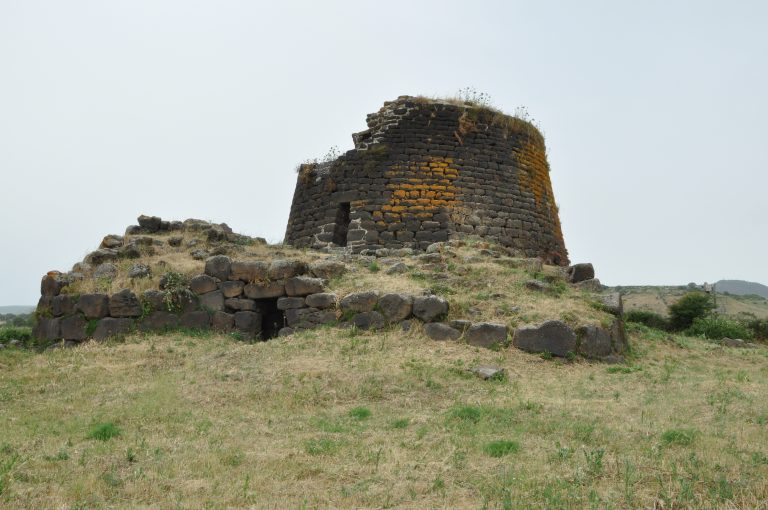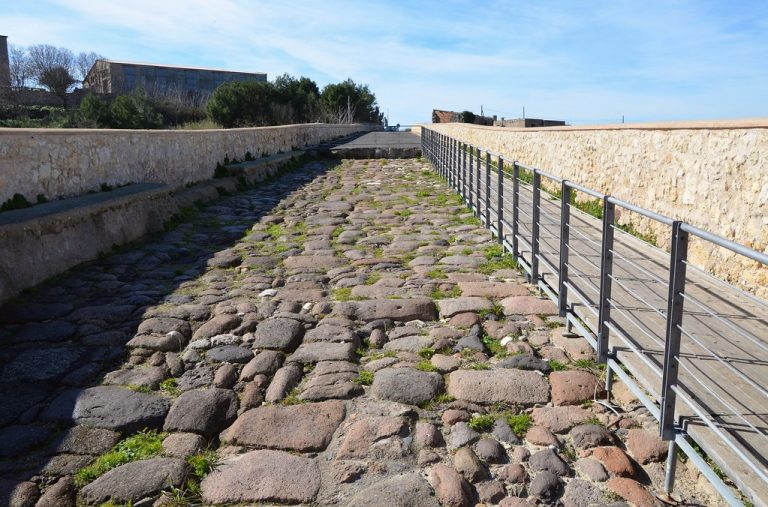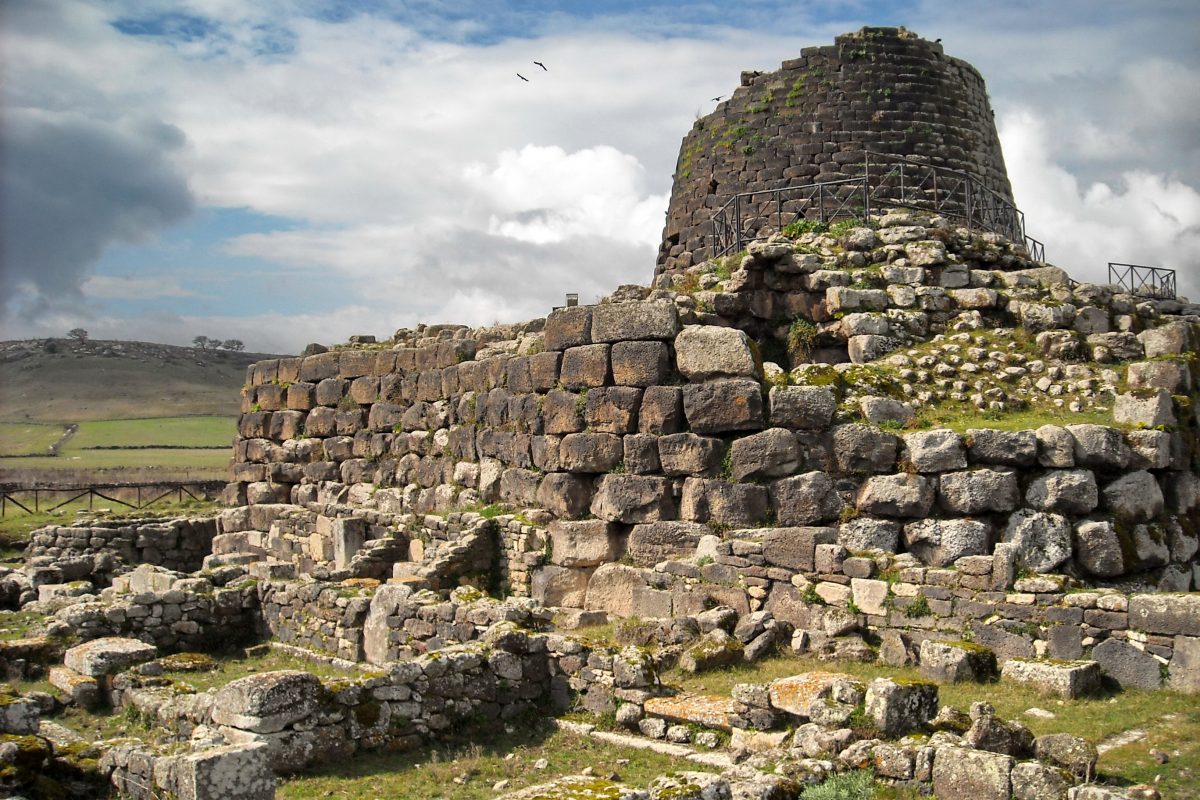In addition to a dreamlike sea and often Caribbean-like beaches, Sardinia naturally also offers fascinating traditions, a diverse and today often modern interpretation of arts and crafts, delicious food and good wines and an extraordinary history, the witnesses of which are clearly visible throughout the island and date back to prehistoric times.
The history of Sardinia is marked by foreign rulers, matriarchal societies, mystical and spiritual rituals, which you can best experience by visiting the most beautiful archaeological sites in north Sardinia.
These fascinating places, which we would like to introduce to you, tell the story of a powerful people, of explorers of other lands and people who were strongly connected to the natural elements of the earth. In the north-east it is Gallura, which is just a stone’s throw from the famous Emerald Coast, while in the north-west, especially around Sassari, there is much to discover that is unique in the entire Mediterranean region.
The great thing is that every municipality in Sardinia is actually home to one or more archaeological treasures. So if you have more time for your holiday, you shouldn’t miss out on the archaeological sites in the province of Sassari. We present our absolute favourites below!
Things to see in Sassari
Monte d’Accoddi, the ziggurat of Sardinia
Monte d’Accoddi, about 11 km from the centre of Sassari, is one of the most important archaeological sites on the island. The cult site is around 5000 years old and is the sacred expression of the pre-Nuragic civilisation, which regarded it as a meeting point between man and God. This towering celestial mound or mountain of the gods resembles the stepped ziggurats in Mesopotamia and is unique in the entire Mediterranean region. In addition to the imposing stepped altar, Monte d’Accoddi is also home to various stones of different shapes, often weighing tonnes. However, their function has not yet been clarified; they may be flat sacrificial tables or the large round stones may symbolise the sun and the moon. Anyone who visits Monte d’Accoddi will not only be impressed by its imposing appearance, but also by the mystical energy that this place radiates. It is said that this place guided prehistoric people in their choice of where to build their places of worship.

Domus de Janas of Montalè
The Domus de Janas di Montalè is located 7 km from the city centre, near the Li Punti district. Originally, it consisted of six hypogea, or underground vaulted tombs, only one of which can still be visited today. You enter through a shaft entrance that leads to an anteroom, which in turn is connected to a cell used for religious services. Inside, the taurine protomes carved on the walls, depictions of bulls with crescent-shaped horns and rectangular or trapezoidal heads, are very impressive. According to scholars, these symbolise the rite of passage from life to death, i.e. the path to the afterlife.
The National Archaeological Museum in Sassari
The National Archaeological Museum in Sassari, dedicated to Giovanni Antonio Sanna (1819 – 1875), who bequeathed his entire art collection to his native city, is one of the most beautiful in Sardinia. Its structure is impressive even from the outside; surrounded by greenery, the entrance with its staircase and columns resembles a Greek temple. The collection is divided into two main sections, one ethnographic and one archaeological, which includes most of the finds from the areas of Sassari, Nuoro, Gallura and Ogliastra. Although there are information panels, we recommend that you rely on the guides to tell you about the history of Sardinia from prehistory to the late Middle Ages.

The most beautiful archaeological sites south of Sassari
Necropolis of Anghelu Ruju in Alghero
Close to the most famous beaches of Alghero, you can visit this marvellous prehistoric burial site, which is unique in Sardinia. The necropolis of Anghelu Ruju consists of 38 tombs excavated in sandstone, dating back to around 3000 BC. Divided into two areas, one flat and the other irregular, this funerary cult site houses several domus de janas with a shaft entrance or a dromos entrance that widens inside. An ideal place to visit in autumn, but if you visit in summer, we recommend that you visit in the cooler hours of the day as it is very exposed to the sun.
Necropolis of Santu Pedru near Alghero
The necropolis of Santu Pedru is located near Alghero and about 25 kilometres from Sassari and consists of 10 hypogea, the aforementioned underground vaulted tombs excavated in the trachyte tufa hills. Among the various tombs, it is Tomb I that particularly impresses visitors with its architectural and decorative details: the well-known taurine protomes, symbols of the passage to the afterlife, the still visible traces of red ochre symbolising blood, and the carved and well-preserved columns. Archaeologists believe that this necropolis was used for funeral rites before burial, with chants and melodies echoing throughout the structure.
Nuraghe Appiu Archaeological Park in Villanova Monteleone
The archaeological complex of the Nuraghe Appiu is located approx. 10 km south of Villanova Monteleone and 60 km south of Sassari in an unspoilt natural landscape with cork and holm oak forests on the Chentu Mannas plateau between Capo Marargiu and Capo Caccia. The main attraction is the Nuraghe Appiu, at the foot of which is the Nuragic village, the stone slab tomb of the giants of Punta ‘e Su Crabile and the Nuraghe with the same name. Although this is an archaeological site that has only recently been brought to light and is still being worked on, in our opinion it is an important place that is certainly worth a visit.
Nuraghe Santu Antine in Torralba
Together with the Nuraghe Losa near Abbasanta and the well-known Su Nuraxi in Barumini, the imposing stone structure of Santu Antine in Torralba, which lies around 40 kilometres south-east of Sassari, is one of the most important prehistoric monuments in Sardinia. A Nuragic village developed at its foot and the visible remains bear witness to its reuse in Roman times. Built from basalt blocks, the interior of the structure is full of corridors, staircases, chambers and wells that are very exciting to walk through. It is one of the largest and best visited nuraghe on the island. There are multilingual audio guides available that you can use via an app to enjoy this visit to the full.
Nuraghe Oes in Giave
Its architectural peculiarity has made it famous: a single chamber divided into three rooms by wooden panels fixed to the walls. This nuraghe is part of the so-called Valley of the Nuraghi, the area with the highest density of these structures, and is located just 800 metres from Santu Antine. To reach the Nuraghe Oes, you just have to walk along the railway tracks, entry is free and you can visit it at any time of day, which makes it even more impressive and mysterious if possible.

The best to see north of Sassari
Necropolis of Su Crocifissu Mannu near Porto Torres
This archaeological site is not signposted, but you can reach it by taking the SS 131 from Sassari for about 14 km in the direction of Porto Torres and turning off onto a dirt road near the small village of Li Lioni. Nowadays, a necropolis is a group of tombs with funerary monuments arranged like the buildings of a settlement. The one at Su Crocifissu Mannu is characterised by 22 tombs, which were built around 5000 years ago and used for burial rites. During excavations, skeletal remains and grave goods were found that allowed archaeologists to identify Su Crucifissu Mannu as a turning point in Sardinian history, anticipating the greatness of the Nuragic civilisation that followed.
Turris Libisonis in Porto Torres
At Porto Torres, you can travel back in time to Sardinia’s Roman past and admire the magnificent remains of the Iulian colony of Turris Libisonis, which was probably founded by Julius Caesar or his adopted son Octavian. The city was inhabited by soldiers on leave from the Roman Empire, who over the years built thermal baths, villas, temples, shops, an aqueduct and a harbour from which they shipped goods throughout the Mediterranean. The archaeological site is still being researched today and can therefore only be visited with a guide, who always tells the story of the site with great enthusiasm. The Turris Libisonis archaeological site is very close to the ferry harbour of Porto Torres, so a visit in conjunction with the early arrival or late departure times could be an idea to visit this site.

 it
it de
de nl
nl en
en fr
fr









